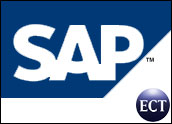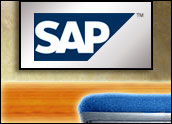
SAP is transitioning its customers to the recently released SAP Enterprise Support package next year — a change that will ultimately increase maintenance and support costs to 22 percent of license fees.
Companies will begin moving to the new package immediately, with price increases set to take effect later.
Specifically, beginning in January 2009, customers will be moved incrementally from their current pricing agreement for SAP Standard Support or SAP Premium Support to the SAP Enterprise Support pricing model — 22 percent of maintenance base — by 2012.
For example, subject to specific contractual limitations, a typical customer paying 17 percent of maintenance base for SAP Standard Support in 2008 will pay a rate of 18.3 percent of maintenance base for SAP Enterprise Support in 2009, SAP explained in its announcement.
For SAP customers still operating on its earlier applications — SAP R/3 4.6c and 4.7 — SAP has lengthened the period of extended maintenance currently offered by one year to make the move to SAP Enterprise Support cost-neutral, it said.
Adding Value
The new support package delivers more value than the offerings it is replacing, namely the SAP Standard Support and SAP Premium Support packages, according to SAP.
The pervasiveness of business networks and mass adoption of service-oriented architecture are challenging traditional support models, the company explained. SAP is positioning its new package as a response to these trends — in short, a bundle of services that go beyond bug fixes and typical maintenance support to provide companies with a holistic offering that reduces risk and maximizes the value of an IT investment.
SAP did not return a call to the E-Commerce Times in time for comment.
In the Medium
The price increases in its maintenance contract put SAP somewhere between the average rate for standard and premium support, according to the Service & Support Professionals Association benchmark database.
“The average price of service/support/maintenance contracts for enterprise software companies is 19 percent of license fees for standard support; 23 percent of license fees for premium support,” John Ragsdale, vice president of research with SSPA, told CRM Buyer.
For client-server software providers, the revenue that maintenance fees provide is oftentimes — especially when license sales are declining or flat — the company’s bread and butter. While most vendors are willing to negotiate the purchase price of a software package, they are generally less likely to give much wiggle room on maintenance fees. In the past, industry standards have held that maintenance fees can be anywhere from 12 percent to 18 percent of license fees.
Many of these industry rules or expectations, though, have been thrown into flux by the arrival and mainstreaming of Software as a Service. These applications, especially the more sophisticated recent offerings, have given buying organizations additional leverage in negotiating with enterprise software vendors.
Despite the changed competitive landscape, other vendors will likely increase maintenance fees as well, Denis Pombriant, principal with Beagle Research, told CRM Buyer. The overall inflation rate and huge energy price increases will be the culprits.
“In a company like SAP that has such a labor content in what it produces, it is not surprising that it would be affected by the inflation spiral,” Pombriant observed.
Indeed, it may be that this price increase is a bellwether for other price increases in the software market. There may be other economic forces at play as well, such as the exchange rate of the dollar. For instance, SSPA’s Ragsdale has seen global companies — particularly those with large operations and headquarters in Europe — raise some product and service pricing in the United States for that reason.
“Servicing some U.S. contracts is not profitable due to the rapid devaluation of the dollar,” he noted.
Changing Definitions
The definition of support is undergoing change as well, Ragsdale continued — a trend that may justify price increases in maintenance.
“Many of the formerly premiere-only options, such as proactive monitoring and remote support, are now being included in basic contracts, and there is a cost associated with these services,” he explained.
“However, by detecting issues and solving them remotely, before the customer is ever impacted, business customers should see less downtime and fewer support incidents,” Ragsdale suggested, “raising their [return on investment] for the technology implementation and more than compensating for a slight rise in the price of the service contract.”























































